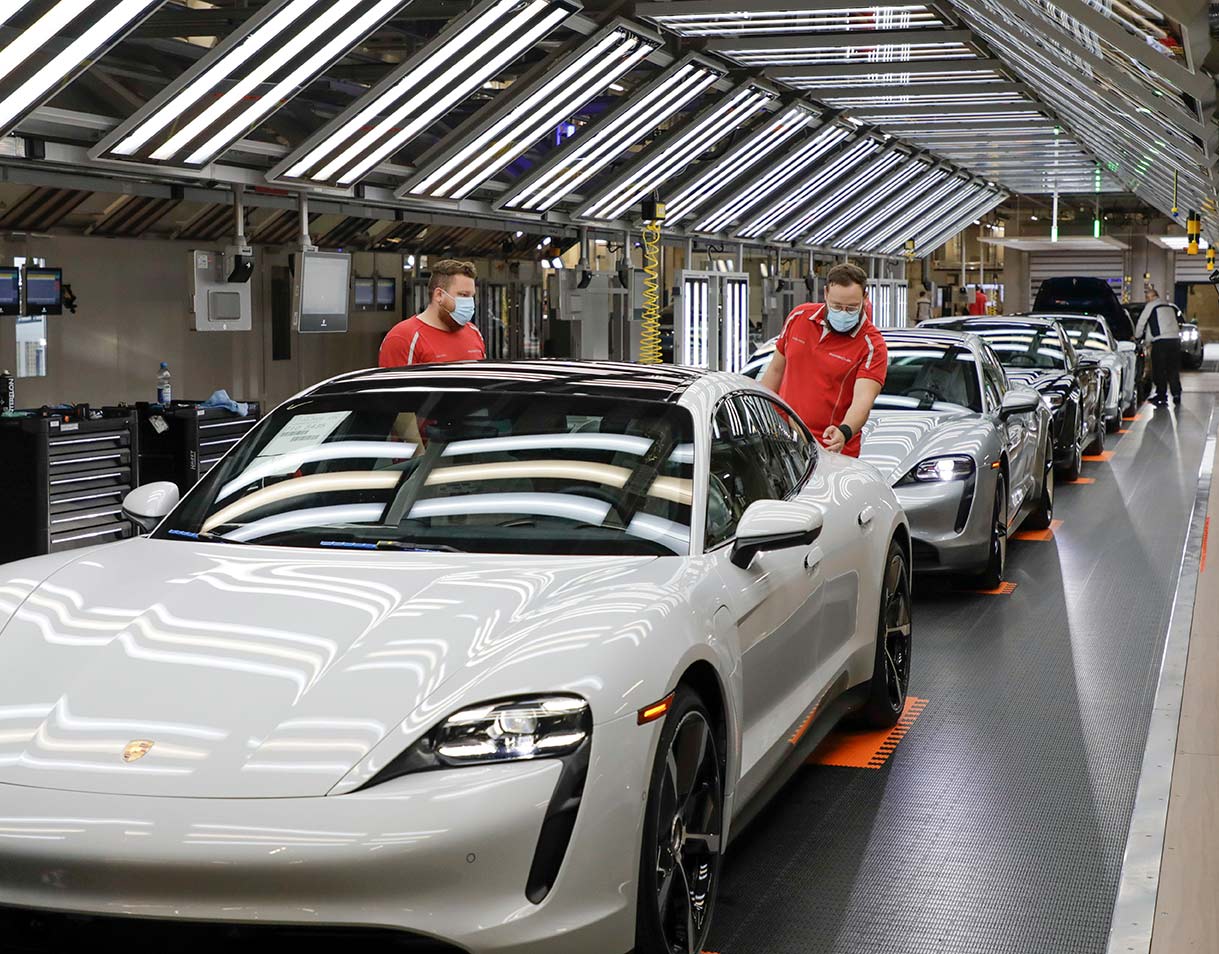BRAND FINANCE EUROPE 500 2021
Auto Brands Dominate in Europe: Mercedes & Ferrari are Continent’s Most Valuable and Strongest Among Top 500 Brands
- Total brand value of Europe’s top 500 most valuable brands drops 10% from €1.96 trillion to €1.76 trillion during the COVID-19 pandemic
- Automobiles is continent’s most valuable sector, accounting for 14% of total brand value in ranking
- Mercedes-Benz is Europe’s most valuable brand, brand value nearly €50 billion
- Ferrari is Europe’s strongest brand, boasting elite AAA+ rating
- Banking sector takes hit, cumulative brand value down 20%
- Changing consumer habits propel retail sector to brand value growth, with Germany’s Delivery Hero continent’s fastest-growing brand – up 148%
- Over half of brands in top 500 hail from just three nations: Germany, France, and UK
The total value of Europe’s top 500 most valuable brands has dropped 10% during the COVID-19 pandemic from €1.96 trillion in 2020 to €1.76 trillion in 2021.
Brand Finance’s ranking has been expanded to include the old continent’s 500 most valuable brands for the first time, allowing for comparisons with the world’s two other major economies – the United States and China. The US is in a league of its own, with its top 500 reaching a total brand value of a staggering €3.40 trillion. While Europe comes in second place, the impact of the COVID-19 pandemic has undermined its standing and China is quickly catching up, with its top 500 brands totalling €1.65 trillion in brand value.
The COVID-19 pandemic has ravaged Europe and the world alike, and the impact on the old continent’s top brands cannot be ignored, with the total brand value of the top 500 ranking decreasing 10% year-on-year. The pandemic has tested the resolve of Europe’s top brands – some have truly thrived and benefitted as consumers completely shifted their habits, whereas others will be hoping that the continent’s rapid vaccination programme enables them to return to normal operations soon.
Richard Haigh, Managing Director, Brand Finance
Automobiles speed ahead as most valuable sector
Automobiles is the most valuable sector across the continent, with the 27 brands that feature in the Brand Finance Europe 500 2021 ranking accounting for 14% of the total brand value (€237.7 billion). German brands still command the auto industry across Europe, with the seven brands represented totalling an impressive €171.5 billion or three quarters of the sector’s total. Mercedes-Benz once again leads the pack as the most valuable brand in Europe, with a brand value of €49.6 billion. Volkswagen (down 1% to €40.0 billion), BMW (down 6% to €34.4 billion), and Porsche (down 5% to €29.2 billion) all claim places in the top 10 in 3rd, 5th, and 6th respectively.
Despite maintaining its position at the top, Mercedes-Benz has recorded a 16% decline in brand value this year. It has been a difficult year for most traditional car manufacturers – Mercedes included – with sales impacted by COVID-19. The iconic German marque also struggled to formulate a coherent electric mobility strategy and communicate a clear vision for its electric car models.
Volkswagen has recorded healthier results, its brand value only recording a marginal 1% drop. The brand has continued to focus on its ‘New Volkswagen’ strategy – described as a new era for the brand, as well as implementing its TOGETHER 2025+ strategy – with the ultimate aim of selling 50 different fully-electric vehicles and another 30 plug-in hybrid options. Should the brand be successful, it will overtake Tesla to become the world’s largest electric carmaker.
Ferrari is Europe’s strongest brand
In addition to measuring overall brand value, Brand Finance also determines the relative strength of brands through a balanced scorecard of metrics evaluating marketing investment, stakeholder equity, and business performance. According to these criteria, Ferrari is Europe’s strongest brand – and the second strongest brand in the world with a Brand Strength Index (BSI) score of 93.9 out of 100 and corresponding elite AAA+ brand strength rating.
Ferrari reacted proactively to the pandemic, initially shutting down production and then reopening with a focus on creating a safe working environment. This both minimised disruption and reinforced the brand’s reputation as a high-quality and responsible firm. In line with this, Ferrari ranks high for reputation in our Global Brand Equity Monitor study, particularly in Western Europe (in the top 3 of all brands researched in France, Italy, and the UK). Ferrari remains a highly desired brand, albeit aspirational rather than accessible for many.
Alongside revenue forecasts, brand strength is a crucial driver of brand value. As Ferrari’s brand strength maintained its rating, its brand value dropped only slightly, down 4% to €7.9 billion. For years, Ferrari has utilised merchandise to support brand awareness and diversify revenue streams and is now taking steps to preserve the exclusivity of the brand, planning to reduce current licensing agreements by 50% and eliminate 30% of product categories.
Banking sector down 20%
As governments scramble to stimulate economic growth in the face of the ongoing global health crisis, and profits and interest rates take a hit, it is unsurprising that Europe’s banking sector has recorded the most dramatic cumulative brand value loss among the main sectors of the economy. The total brand value in the industry has declined by 20% – from €225.8 billion in 2020 to €181.8 billion in 2021 – and three brands have dropped out of the ranking this year, bringing the total number to 53.
The UK’s HSBC is the highest ranked banking brand, but only sits in 21st spot, down six places from last year following an 18% brand value decrease to €14.5 billion. Over the last year, HSBC has had to navigate a dent in profits, lower interest rates sparked by the pandemic, political tensions between the US and China, and the uncertainty surrounding Brexit, all of which caused the brand’s profits to plunge by 65% in the first half of 2020.
Similarly, Spain’s leader in the sector, Santander, has seen its brand value go down 23% to €12.2 billion, dropping out of the top 25 this year to 26th position. Its larger presence in the South American markets has meant the risk exposure is larger than its Spanish counterparts’ and thus the turbulence of the last year has meant expected returns are less optimistic than previous years, impacting overall brand value.
Other national banking leaders from across the continent have fared slightly better, climbing the ranking despite losing brand value: France’s BNP Paribas (down 12% to €10.5 billion), the Netherlands’ ING (down 17% to €8.5 billion), and Switzerland’s UBS (down 11% to €7.4 billion) have moved up to 29th, 38th, and 51st positions, respectively.
Sber cashes in as strongest banking brand
Russia’s market leader, Sber, is the strongest banking brand across the continent and globally. The brand has successfully increased its brand strength year-on-year to reach an impressive BSI score of 92.0 out of 100 and the coveted AAA+ brand strength rating.
As the largest bank in Russia, Sber has benefitted from its stable brand and high levels of customer loyalty. These have only been boosted by the recent rebranding to consolidate its ecosystem of services – encompassing banking, health, and logistics, among others – around the Sber brand. Sber is poised for further success, as the company’s pledge to spend more on its brand in the coming year is likely to further boost its BSI score.
In our original market research, Sber consistently outperforms its peers in overall reputation and familiarity – it is widely known, always top-of-mind, and well-regarded. As a result, recommendation is high. Its ubiquitous presence and – in consumers’ eyes – by far the best digital offering ensure high mental and physical availability, which are strong foundations for brand strength.
Sber’s successful rebranding as a cross-sector tech brand can be an example to other market leaders worldwide. While some rest on their laurels and are often surprised by disruptive challengers, Sber is focused on the future, innovating and modernising with their customers’ best interests in mind.
David Haigh, CEO of Brand Finance
Retail sector posts brand value growth
Bucking the trend across Europe’s largest industries, the retail sector has recorded a 4% uptick in cumulative brand value. It is the third most valuable sector, behind autos and banking, with the 49 brands that feature accounting for 9% of the total brand value..
Unsurprisingly, various types of retailers have been impacted by the pandemic differently, as consumer habits have been forced to change. Notably, delivery apps and e-commerce platforms are among the fastest growers in the ranking this year. Delivery apps have benefited from the displacement of hospitality spend, where demand for quality food and small indulgences cannot be fulfilled by lockdown-hit restaurants and bars, with consumers turning to takeaways.
Germany’s Delivery Hero is the fastest-growing brand in the ranking, following an impressive 148% brand value growth to €3.2 billion. Similarly, Just Eat is the second fastest-growing brand, up 112% to €2.5 billion.
Nevertheless, brick-and-mortar retailers IKEA (down 13% to €15.3 billion), Aldi, and Lidl still claim the podium for the sector’s most valuable brands. The German supermarket rivals have posted contrasting results, however, with Aldi recording a 2% increase in brand value and Lidl a 14% decrease.
Aldi (brand value €13.2 billion) has embarked on a foray into the online retail space, successfully pivoting its offering in the face of the pandemic. The same strategy has not been undertaken by Lidl (brand value €9.6 billion), with the CEO of the UK arm, Christian Härtnagel, arguing the pandemic has artificially inflated demand for online shopping and that the costs are simply too high.
German brands represent a quarter of total brand value
With the nation’s 65 brands making up 25% of the total brand value in the ranking, Germany is well ahead of the pack.
France sits in second, with 91 brands featuring and their brand value equating to 20% of the total. Orange (down 1% to €16.3 billion), Total (down 26% to €15.4 billion), and AXA (up 1% to €14.8 billion) are the top three most valuable French brands, claiming 13th, 15th, and 19th spots, respectively. Orange has continued its focus on the deployment of 5G, which as of the beginning of 2021, is present in 160 cities.
Brexit puts Britain on backfoot?
Despite the UK still having the greatest number of brands represented at 101, it is the only major economy to lose brands in the ranking, with nine brands dropping out the ranking this year. After Britain’s official exit from the European Union in January 2020, the true impact of its departure is yet to be seen, especially given the pandemic turmoil of the previous year.
A total of 334 or two in three among the top 500 brands hail from the EU, a number that has dropped a considerable amount now that the UK has left.
Very few brands from Central and Eastern Europe are represented, with only 22 featured in total. The majority of these brands hail from Russia, whose 15 brands account for 2% of the total brand value in the ranking.
With over half of the brands in the top 500 hailing from just three nations – Germany, France, and the UK – the smaller economies have a long way to go to stamp their authority across the continent. The focus should be shifted towards investment in building up and supporting strong homegrown brands to expand internationally, which will in turn drive local economies forward.
Richard Haigh, Managing Director, Brand Finance













